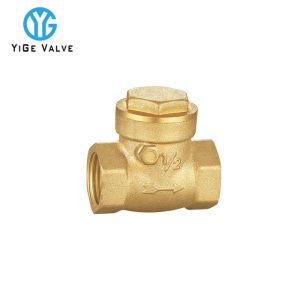In-Depth Analysis of Brass Check Valves: Structure, Working Principle, and Diverse Applications
In-Depth Analysis of Brass Check Valves: Structure, Working Principle, and Diverse Applications
Introduction
Brass check valves play a crucial role as a type of essential valve in both industrial and residential settings. This article aims to delve into the structural features, working principles, and various application scenarios of brass check valves, providing readers with a comprehensive understanding of the importance and functionality of these valves.
Structure and Features
Brass check valves exhibit the following key features due to their precise structural design:
- Valve Body: Typically crafted from high-quality brass material, offering excellent corrosion resistance and durability.
- Valve Disc: Precision-engineered valve discs automatically open or close based on fluid flow direction, ensuring unidirectional fluid flow.
- Spring: Carefully designed springs provide closing force, ensuring complete sealing of the valve under normal operating conditions.
- Sealing Components: Sealing components made from wear-resistant materials effectively prevent media leakage, ensuring the safe operation of the system.
Working Principle
The working principle of brass check valves is based on precise fluid dynamics and mechanical principles:
- Normal Operating State: When the medium flows in the correct direction, the valve disc opens, allowing fluid to pass through smoothly. Conversely, when the medium attempts to flow back, the valve disc swiftly closes, preventing backflow and safeguarding the system.
- Stability: Brass check valves demonstrate excellent stability and reliability, suitable for a wide range of fluids, temperatures, and pressure conditions.
Applications
Brass check valves find extensive applications in various fields, including but not limited to:
- Water Supply Systems: Used to prevent backflow of water after pump shutdown, safeguarding pipeline systems and ensuring continuous water supply.
- HVAC Systems: In heating and air conditioning systems, they prevent the backflow of hot or cold media, improving system efficiency and energy conservation.
- Chemical Industry: In chemical processes, they control fluid flow direction, preventing media mixing or backflow, ensuring production safety.
Conclusion
As a critical valve device, brass check valves with their precise design and reliability play a vital role in a wide range of engineering and applications. A thorough understanding of their structure, working principles, and application areas is essential for ensuring the safe operation of systems.

